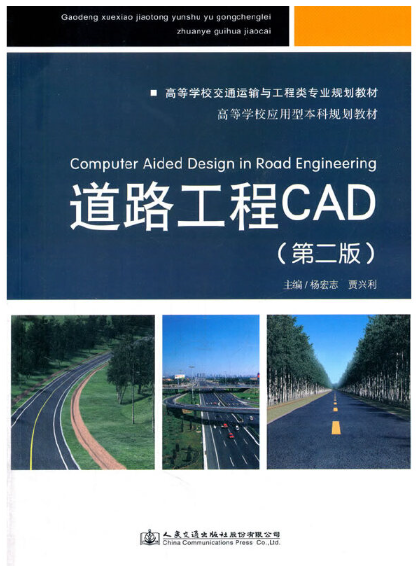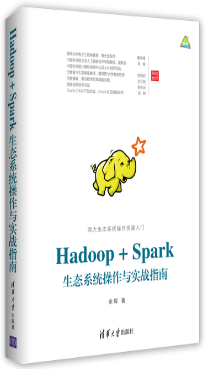文艺复兴以来,源远流长的科学精神和逐步形成的学术规范,使西方国家在自然科学的各个领域取得了垄断性的优势;也正是这样的优势,使美国在信息技术发展的六十多年间名家辈出、独领风骚。在商业化的进程中,美国的产业界与教育界越来越紧密地结合,计算机学科中的许多泰山北斗同时身处科研和教学的前线,由此而产生的经典科学著作,不仅擘划了研究的范畴,还揭示了学术的源变,既遵循学术规范,又自有学者个性,其价值并不会因年月的流逝而减退。
近年,在全球信息化大潮的推动下,我国的计算机产业发展迅猛,对专业人才的需求日益迫切。这对计算机教育界和出版界都既是机遇,也是挑战;而专业教材的建设在教育战略上显得举足轻重。在我国信息技术发展时间较短的现状下,美国等发达国家在其计算机科学发展的几十年间积淀和发展的经典教材仍有许多值得借鉴之处。因此,引进一批国外优秀计算机教材将对我国计算机教育事业的发展起到积极的推动作用,也是与世界接轨、建设真正的世界一流大学的必由之路。
“计算机科学丛书”的出版工作得到了国内外学者的鼎力相助,国内的专家不仅提供了中肯的选题指导,还不辞劳苦地担任了翻译和审校的工作;而原书的作者也相当关注其作品在中国的传播,有的还专门为其书的中译本作序。迄今,“计算机科学丛书”已经出版了近500个品种,这些书籍在读者中树立了良好的口碑,并被许多高校采用为正式教材和参考书籍。其影印版“经典原版书库”作为姊妹篇也被越来越多实施双语教学的学校所采用。
图书详情 | 《计算机体系结构:量化研究方法(英文版)(原书第6版)》
图书分类 一 〉工学 一 〉计算机科学与技术
经典原版书库 : 计算机体系结构:量化研究方法(英文版)(原书第6版)
[美]约翰·L.亨尼斯、戴维·A.帕特森 著;
2019年7月
机械工业出版社
- 机械工业出版社
- 9787111631101
- 6版
- 283841
- 47229588-0
- 平装
- 16开
- 2019年7月
- -
- 1395
- 930
- -
- 工学
- 计算机科学与技术
- 0812
- -
- 计算机通信类
- 本科
- 重版
- -
- -
- -
内容简介:
目录
Chapter 1 Fundamentals of Quantitative Design and Analysis
1.1 Introduction 2
1.2 Classes of Computers 6
1.3 Defining Computer Architecture 11
1.4 Trends in Technology 18
1.5 Trends in Power and Energy in Integrated Circuits 23
1.6 Trends in Cost 29
1.7 Dependability 36
1.8 Measuring, Reporting, and Summarizing Performance 39
1.9 Quantitative Principles of Computer Design 48
1.10 Putting It All Together: Performance, Price, and Power 55
1.11 Fallacies and Pitfalls 58
1.12 Concluding Remarks 64
1.13 Historical Perspectives and References 67
Case Studies and Exercises by Diana Franklin 67
Chapter 2 Memory Hierarchy Design
2.1 Introduction 78
2.2 Memory Technology and Optimizations 84
2.3 Ten Advanced Optimizations of Cache Performance 94
2.4 Virtual Memory and Virtual Machines 118
2.5 Cross-Cutting Issues: The Design of Memory Hierarchies 126
2.6 Putting It All Together: Memory Hierarchies in the ARM Cortex-A53 and Intel Core i7 6700 129
2.7 Fallacies and Pitfalls 142
2.8 Concluding Remarks: Looking Ahead 146
2.9 Historical Perspectives and References 148
Case Studies and Exercises by Norman P. Jouppi, Rajeev
Balasubramonian, Naveen Muralimanohar, and Sheng Li
Chapter 3 Instruction-Level Parallelism and Its Exploitation
3.1 Instruction-Level Parallelism: Concepts and Challenges 168
3.2 Basic Compiler Techniques for Exposing ILP 176
3.3 Reducing Branch Costs With Advanced Branch Prediction 182
3.4 Overcoming Data Hazards With Dynamic Scheduling 191
3.5 Dynamic Scheduling: Examples and the Algorithm 201
3.6 Hardware-Based Speculation 208
3.7 Exploiting ILP Using Multiple Issue and Static Scheduling 218
3.8 Exploiting ILP Using Dynamic Scheduling, Multiple Issue, and Speculation 222
3.9 Advanced Techniques for Instruction Delivery and Speculation 228
3.10 Cross-Cutting Issues 240
3.11 Multithreading: Exploiting Thread-Level Parallelism to Improve Uniprocessor Throughput 242
3.12 Putting It All Together: The Intel Core i7 6700 and ARM Cortex-A53 247
3.13 Fallacies and Pitfalls 258
3.14 Concluding Remarks: What’s Ahead? 264
3.15 Historical Perspective and References 266
Case Studies and Exercises by Jason D. Bakos and Robert P. Colwell 266
Chapter 4 Data-Level Parallelism in Vector, SIMD, and GPU Architectures
4.1 Introduction 282
4.2 Vector Architecture 283
4.3 SIMD Instruction Set Extensions for Multimedia 304
4.4 Graphics Processing Units 310
4.5 Detecting and Enhancing Loop-Level Parallelism 336
4.6 Cross-Cutting Issues 345
4.7 Putting It All Together: Embedded Versus Server GPUs and Tesla Versus Core i7 346
4.8 Fallacies and Pitfalls 353
4.9 Concluding Remarks 357
4.10 Historical Perspective and References 357
Case Study and Exercises by Jason D. Bakos 357
Chapter 5 Thread-Level Parallelism
5.1 Introduction 368
5.2 Centralized Shared-Memory Architectures 377
5.3 Performance of Symmetric Shared-Memory Multiprocessors 393
5.4 Distributed Shared-Memory and Directory-Based Coherence 404
5.5 Synchronization: The Basics 412
5.6 Models of Memory Consistency: An Introduction 417
5.7 Cross-Cutting Issues 422
5.8 Putting It All Together: Multicore Processors and Their Performance 426
5.9 Fallacies and Pitfalls 438
5.10 The Future of Multicore Scaling 442
5.11 Concluding Remarks 444
5.12 Historical Perspectives and References 445
Case Studies and Exercises by Amr Zaky and David A. Wood 446
Chapter 6 Warehouse-Scale Computers to Exploit Request-Level and Data-Level Parallelism
6.1 Introduction 466
6.2 Programming Models and Workloads for Warehouse-Scale Computers 471
6.3 Computer Architecture of Warehouse-Scale Computers 477
6.4 The Efficiency and Cost of Warehouse-Scale Computers 482
6.5 Cloud Computing: The Return of Utility Computing 490
6.6 Cross-Cutting Issues 501
6.7 Putting It All Together: A Google Warehouse-Scale Computer 503
6.8 Fallacies and Pitfalls 514
6.9 Concluding Remarks 518
6.10 Historical Perspectives and References 519
Case Studies and Exercises by Par
1.1 Introduction 2
1.2 Classes of Computers 6
1.3 Defining Computer Architecture 11
1.4 Trends in Technology 18
1.5 Trends in Power and Energy in Integrated Circuits 23
1.6 Trends in Cost 29
1.7 Dependability 36
1.8 Measuring, Reporting, and Summarizing Performance 39
1.9 Quantitative Principles of Computer Design 48
1.10 Putting It All Together: Performance, Price, and Power 55
1.11 Fallacies and Pitfalls 58
1.12 Concluding Remarks 64
1.13 Historical Perspectives and References 67
Case Studies and Exercises by Diana Franklin 67
Chapter 2 Memory Hierarchy Design
2.1 Introduction 78
2.2 Memory Technology and Optimizations 84
2.3 Ten Advanced Optimizations of Cache Performance 94
2.4 Virtual Memory and Virtual Machines 118
2.5 Cross-Cutting Issues: The Design of Memory Hierarchies 126
2.6 Putting It All Together: Memory Hierarchies in the ARM Cortex-A53 and Intel Core i7 6700 129
2.7 Fallacies and Pitfalls 142
2.8 Concluding Remarks: Looking Ahead 146
2.9 Historical Perspectives and References 148
Case Studies and Exercises by Norman P. Jouppi, Rajeev
Balasubramonian, Naveen Muralimanohar, and Sheng Li
Chapter 3 Instruction-Level Parallelism and Its Exploitation
3.1 Instruction-Level Parallelism: Concepts and Challenges 168
3.2 Basic Compiler Techniques for Exposing ILP 176
3.3 Reducing Branch Costs With Advanced Branch Prediction 182
3.4 Overcoming Data Hazards With Dynamic Scheduling 191
3.5 Dynamic Scheduling: Examples and the Algorithm 201
3.6 Hardware-Based Speculation 208
3.7 Exploiting ILP Using Multiple Issue and Static Scheduling 218
3.8 Exploiting ILP Using Dynamic Scheduling, Multiple Issue, and Speculation 222
3.9 Advanced Techniques for Instruction Delivery and Speculation 228
3.10 Cross-Cutting Issues 240
3.11 Multithreading: Exploiting Thread-Level Parallelism to Improve Uniprocessor Throughput 242
3.12 Putting It All Together: The Intel Core i7 6700 and ARM Cortex-A53 247
3.13 Fallacies and Pitfalls 258
3.14 Concluding Remarks: What’s Ahead? 264
3.15 Historical Perspective and References 266
Case Studies and Exercises by Jason D. Bakos and Robert P. Colwell 266
Chapter 4 Data-Level Parallelism in Vector, SIMD, and GPU Architectures
4.1 Introduction 282
4.2 Vector Architecture 283
4.3 SIMD Instruction Set Extensions for Multimedia 304
4.4 Graphics Processing Units 310
4.5 Detecting and Enhancing Loop-Level Parallelism 336
4.6 Cross-Cutting Issues 345
4.7 Putting It All Together: Embedded Versus Server GPUs and Tesla Versus Core i7 346
4.8 Fallacies and Pitfalls 353
4.9 Concluding Remarks 357
4.10 Historical Perspective and References 357
Case Study and Exercises by Jason D. Bakos 357
Chapter 5 Thread-Level Parallelism
5.1 Introduction 368
5.2 Centralized Shared-Memory Architectures 377
5.3 Performance of Symmetric Shared-Memory Multiprocessors 393
5.4 Distributed Shared-Memory and Directory-Based Coherence 404
5.5 Synchronization: The Basics 412
5.6 Models of Memory Consistency: An Introduction 417
5.7 Cross-Cutting Issues 422
5.8 Putting It All Together: Multicore Processors and Their Performance 426
5.9 Fallacies and Pitfalls 438
5.10 The Future of Multicore Scaling 442
5.11 Concluding Remarks 444
5.12 Historical Perspectives and References 445
Case Studies and Exercises by Amr Zaky and David A. Wood 446
Chapter 6 Warehouse-Scale Computers to Exploit Request-Level and Data-Level Parallelism
6.1 Introduction 466
6.2 Programming Models and Workloads for Warehouse-Scale Computers 471
6.3 Computer Architecture of Warehouse-Scale Computers 477
6.4 The Efficiency and Cost of Warehouse-Scale Computers 482
6.5 Cloud Computing: The Return of Utility Computing 490
6.6 Cross-Cutting Issues 501
6.7 Putting It All Together: A Google Warehouse-Scale Computer 503
6.8 Fallacies and Pitfalls 514
6.9 Concluding Remarks 518
6.10 Historical Perspectives and References 519
Case Studies and Exercises by Par














